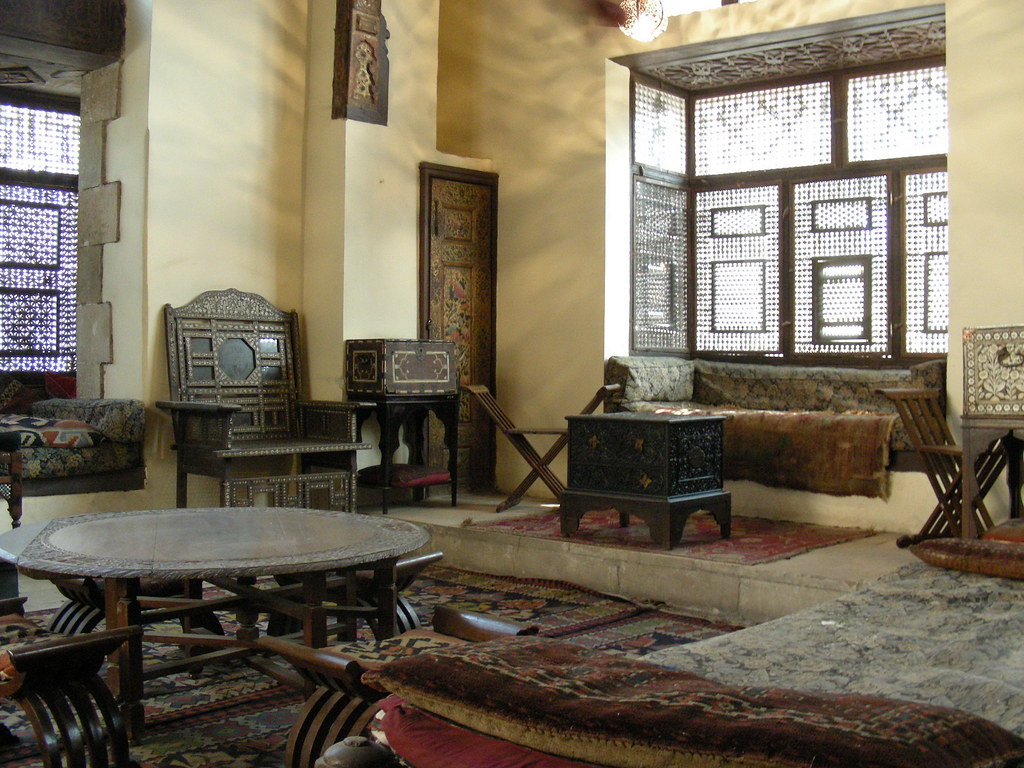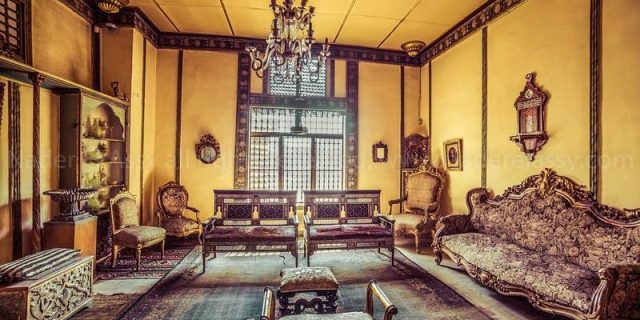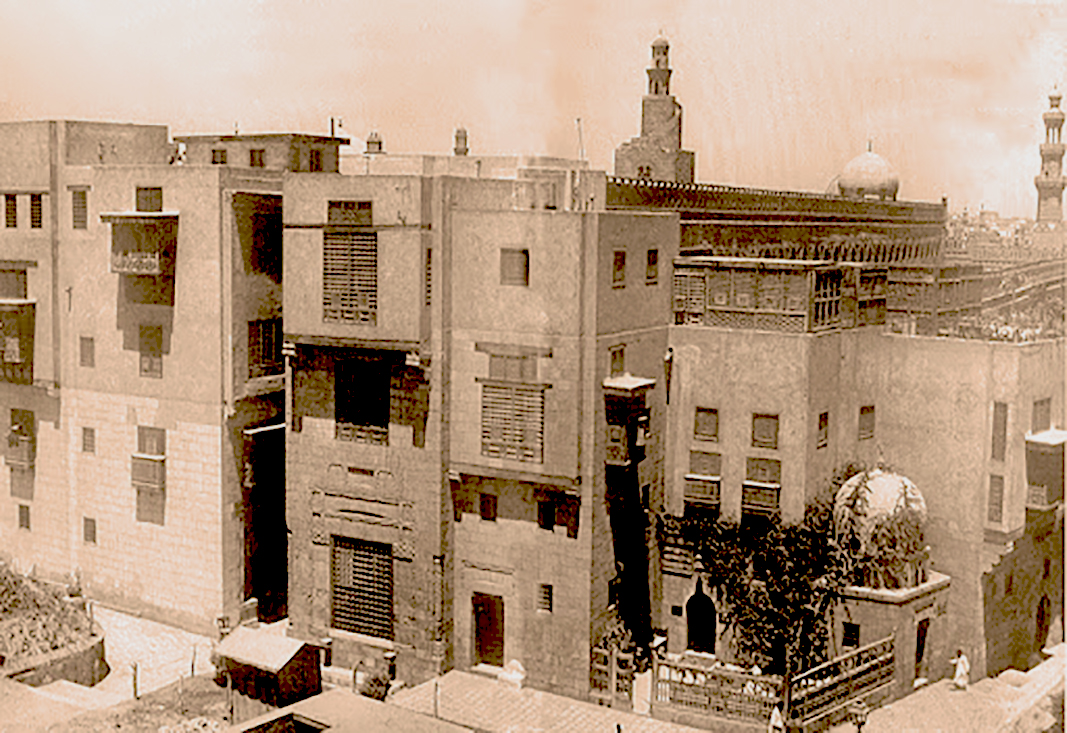متحف “جاير أندرسون”
Egypt is known for its magnificent historical spots that provoke the curiosity of everyone around the world. Tourists come from all over the world to explore the beauty of our touristic places. We have decided to present one of the hidden historic gems located in Cairo, which portrays the astonishment that tourists feel when they get the chance not to only visit the country for once, but living for a while and get inspired from Egyptian oriental culture as well as a pinch of Arabian inspirations.
The museum takes its name from Gayer-Anderson, a British major and army doctor who was on assignment in Egypt and was granted permission to reside in the house between 1935 and 1942.
Gayer-Anderson is a traveler and a big fan of oriental and Egyptian culture and arts. Anderson collected a vast of various items from different historical periods that filled the house with an exceptional and unusual assortment of furniture, rugs, silks, glassware and crystal from Egypt, Turkey, China and Syria; and of course, it all includes the oriental flavor.
There is a room dedicated to antique furniture entirely from China along with other rooms featuring Indian chairs, Pharaonic antiques, Italian-made chandeliers, English-made tables, and Persian rugs as well. Another room in the museum is called the Damascus Room, which demonstrates how an upper-class 18th century bedroom of a Syrian house would look. Another one presents the oriel, “El-Mashrabia” which used to be a common architectural- pattern in the 17th century houses. Probably each room at the house represents the lifestyle of a particular oriental culture.
It is worth noting that Gayer-Anderson Museum has managed to become a favorite shooting spot among movie and television producers. For instance, and may be the most famous, James Bond’s ‘The Spy Who Loved Me’ was shot in the museum’s reception hall and the rooftop terrace.
On his death in 1945, Gayer-Anderson handed down the house along with the treasures to the Egyptian government back.
To experience for the mysteries of the Gayer-Andersen Museum, please contact concierge for more information.
تشتهر مصر بأماكنها التاريخية الساحرة التي تثير فضول كل فرد من جميع أنحاء العالم. حيث يأتي السياح من كل بقاع الأرض لاكتشاف جمال معالمنا السياحية. لذا قررنا أن نقدم لكم المناطق التاريخية الخفية الموجودة بالقاهرة التي تنم عن الروعة والجمال والتي يشعر بها السياح عندما تتاح لهم الفرصة ليس فقط لمن يزورون البلد لمرة واحدة لكن لمن يقيم لفترة من الوقت ويستمتع بروعة الحضارة الشرقية المصرية وينهل من مصادر الإلهام العربية.
يعود اسم المتحف إلى الضابط الإنجليزي جاير أندرسون الذي كان يعمل في الجيش البريطاني طبيبًا ويؤدي خدمته في مصر وسمح له بالإقامة في المنزل في الفترة بين عامي 1935 و1942.
جاير أندرسون رحالة وعاشق للحضارة الشرقية والمصرية وفنونها. جمع أندرسون مجموعة كبيرة من المقتنيات المتنوعة من كل الفترات التاريخية. حيث يعج المنزل بمجموعة استثنائية من قطع الأثاث والسجاد والمشغولات الحريرية والزجاجية والكريستال من مصر وتركيا والصين وسوريا حيث توحي جميعها بالعبق الشرقي بكل تاكيد.
يوجد بالمتحف غرفة مخصصة لقطع الأثاث الأثرية القادمة من الصين إلى جانب غرف أخرى بها أثاث من المقاعد الهندية والقطع الأثرية الفرعونية والسجاد الإيطالي والطاولات الإنجليزية والسجاد الفارسي أيضًا. كما يوجد غرفة أخرى تعرف باسم “غرفة دمشق” والتي تعرض غرفة نوم لمنزل سوري من الطبقة العليا في القرن الثامن عشر. وثمة غرفة أخرى تعرض النوافذ الشرقية المعروفة باسم “المشربية” والتي كانت تستخدم في منازل القرن السابع عشر كطراز معماري شائع في تلك الآونة. من المرجح أن كل غرفة في المنزل تقدم نمط حياة حضارة شرقية معينة.
جدير بالذكر أن متحف جاير أندرسون قد نجح في أن يشغل اهتمام منتجي السينما والتليفزيون ليصبح أفضل مكان لتصوير المشاهد. مثال على ذلك وربما يكون هو الأشهر فيلم جيمس بوند “الجاسوس الذي أحبني” والذي تم تصويره في بهو استقبال المتحف وفي شرفة السطح.
قام جاير أندرسون بتسليم المنزل بكل مقتنايته الثمينة للحكومة المصرية في عام 1945 وهو نفس العام الذي وافته المنيه به.
لزيارة متحف جاير أندرسون واكتشاف أسراره نرجو منكم الاتصال بكتب الإستعلامات للمزيد من المعلومات.



